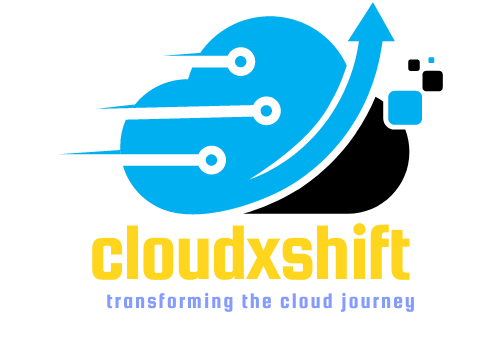
Cloud Migration Strategies to optimize cost
Cloud Migration Strategies
Choose Cloud Right Provider
Optimzie Resources
Use Cloud-native Tools
Implement Cost Managment Policies
Adopt DevOps and Automation Practices
Take Advantage of Discounts and Credits
Monitor and Optimize Cloud Costs
Consider Multi-Cloud Strategies

As businesses increasingly move their workloads to the cloud, cost optimization has become a crucial aspect of cloud migration strategy. While cloud computing offers many benefits, including scalability, flexibility, and improved performance, it can also be costly if not managed properly. In this article, we will explore some strategies that businesses can use to optimize costs in their cloud migration strategy.
Choose Cloud Right Provider
Choose the Right Cloud Provider and Service Model One of the most important decisions businesses will make during their cloud migration journey is choosing the right cloud provider and service model. Different providers offer different pricing models and service levels, so it is important to do your research and choose the provider and service model that best fits your business needs.
For example, some providers offer pay-as-you-go pricing, which allows businesses to pay only for the resources they use. Other providers offer reserved instances, which offer lower pricing in exchange for a long-term commitment. Choosing the right pricing model can make a significant difference in your cloud costs.
Optimzie Resources
Optimize Resource Usage Cloud providers offer a wide range of tools and services to help businesses optimize their resource usage. For example, auto-scaling allows businesses to automatically adjust their resources based on demand, ensuring that they are not overprovisioned or underutilized.
In addition, businesses can use monitoring and analytics tools to identify resource usage patterns and optimize their resource allocation accordingly. For example, if a business notices that a particular resource is being underutilized, they can allocate that resource to another workload that needs it more.
Use Cloud-native Tools
Use Cloud-native Tools and Services One of the benefits of cloud computing is the availability of cloud-native tools and services that can help businesses optimize their costs. For example, serverless computing allows businesses to run code without the need for a dedicated server, which can result in significant cost savings.
Similarly, cloud storage services can help businesses reduce their storage costs by only paying for the storage they use, rather than paying for a fixed amount of storage upfront. By leveraging these cloud-native tools and services, businesses can optimize their costs and improve their overall cloud performance.
Implement Cost Managment Policies
Implement Cost Management Policies Implementing cost management policies is a crucial step in optimizing costs in your cloud migration strategy. This involves establishing clear guidelines and policies for cloud usage, such as setting spending limits and monitoring costs regularly.io
In addition, businesses can use cost management tools and services provided by cloud providers to track and analyze their cloud costs. These tools can help businesses identify areas where costs can be reduced and make informed decisions about their cloud usage.
Adopt DevOps and Automation Practices
Adopt DevOps and Automation Practices DevOps and automation practices can help businesses optimize their cloud costs by reducing the time and effort required to manage their cloud environment. By automating tasks such as resource provisioning, configuration management, and deployment, businesses can reduce the risk of errors and improve their overall efficiency.
In addition, DevOps practices such as continuous integration and delivery (CI/CD) can help businesses deliver software faster and more reliably, which can lead to cost savings and improved performance.
Conclusion Optimizing costs is an essential part of any cloud migration strategy. By choosing the right cloud provider and service model, optimizing resource usage, using cloud-native tools and services, implementing cost management policies, and adopting DevOps and automation practices, businesses can significantly reduce their cloud costs while improving their overall cloud performance. As businesses continue to adopt cloud computing, optimizing costs will become increasingly important for staying competitive in today’s market.
Take Advantage of Discounts and Credits
Take Advantage of Discounts and Credits Cloud providers often offer discounts and credits to businesses to help them reduce their cloud costs. For example, providers may offer credits to new customers or discounts for long-term commitments.
In addition, providers may offer discounts for certain workloads or usage patterns. For example, some providers offer discounts for workloads that run continuously for a long period, or for workloads that use a particular service heavily.
Businesses can take advantage of these discounts and credits to reduce their cloud costs, but it is important to read the terms and conditions carefully to ensure that you are not overpaying for services you don’t need.
Consider Multi-Cloud Strategies
Consider Multi-Cloud Strategies Using a multi-cloud strategy can help businesses optimize their cloud costs by leveraging the strengths of multiple cloud providers. For example, a business may use one provider for its compute needs, and another provider for its storage needs.
By using multiple providers, businesses can reduce their reliance on a single provider and take advantage of the pricing and service advantages of each provider. However, managing a multi-cloud environment can be complex, so businesses need to ensure that they have the right tools and expertise to manage their multi-cloud environment effectively.
Monitor and Optimize Cloud Costs
Monitor and Optimize Cloud Costs Regularly Optimizing cloud costs is an ongoing process, and businesses need to monitor and optimize their costs regularly to ensure that they are not overspending on their cloud environment. This involves regularly reviewing cloud usage and costs, and making changes to optimize cloud usage as needed.
Businesses can use cost management tools provided by cloud providers, or third-party tools to monitor their cloud usage and costs. These tools can help businesses identify areas where costs can be reduced and make informed decisions about their cloud usage.
In conclusion, optimizing costs is an essential part of any cloud migration strategy, and there are several strategies that businesses can use to optimize their cloud costs. By choosing the right cloud provider and service model, optimizing resource usage, using cloud-native tools and services, implementing cost management policies, adopting DevOps and automation practices, taking advantage of discounts and credits, considering multi-cloud strategies, and monitoring and optimizing cloud costs regularly, businesses can significantly reduce their cloud costs while improving their overall cloud performance.
Furhter Readings
Unleashing the Power of AWS EC2
Future of DevOps: Tools That Will Bring Change
AWS Identity and Access managment






2 Comments
Pingback:
Pingback: